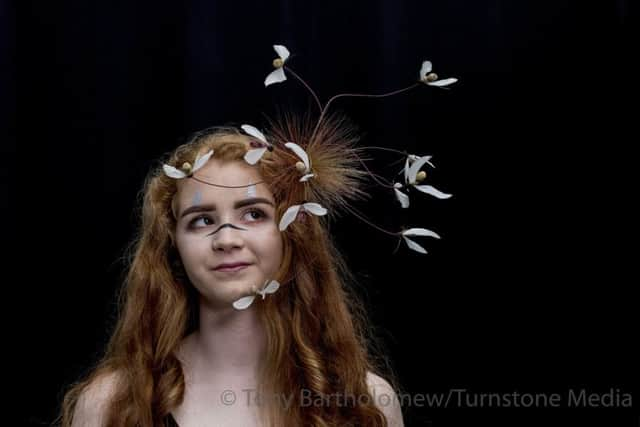A head for mites


The three sisters – the fourth sibling, brother Jim, still too young to join them – liked to seek out caterpillars, too, often the neon-green larvae of the emperor moth and the bronze-and-black striped of the northern eggar moth.
Now an acclaimed milliner and textile artist, Bridget has very clear memories of an incident when she was six or seven. The sisters found the caterpillar of a northern eggar moth and took it home. “We fed it on heather, and it formed a chrysalis. We waited for it to hatch, but when it did, what came out wasn’t a moth,” says Bridget.
Advertisement
Hide AdAdvertisement
Hide AdInstead what emerged was a parasitic ichneumon wasp, which had used the moth larvae both as a home and a larder for months. “I suppose it was rather sinister, but children don’t see things that way, do they?” adds Bridget. “Nature is quite shameless, isn’t she? There’s death and pornography all over the place.”
The incident was the trigger for a youthful fascination with insects which then lay dormant within the adult Bridget for many years, finally re-hatching a few years ago when she was asked to provide a piece of work for the Gold Medal-winning Thrive Garden at the Chelsea Flower Show.
“I made some flowers, then realised that what they really needed was a bee. It set me thinking about insects. They make up more than half of life on this planet and yet we know so little about them.”
After boarding school in Scotland, Bridget went to Scarborough Technical College in the late 70s to study foundation art and then on to Farnham College for a course in textiles. After graduation, she landed a job with legendary British fashion designer Jean Muir and in 1989, she set up her own company, Bailey Tomlin, making exquisite headpieces based on flowers, feathers, fruit – even a strawberry tart.
Advertisement
Hide AdAdvertisement
Hide AdHer offbeat creations have appeared in Italian Vogue and the Financial Times’ How to Spend It section for those with serious cash to spare, but recently Bridget has become more and more driven to create works of art, rather than hats. “I’ve been a milliner for about 35 years now,” she says. “But I was always a hat-maker who made the occasional sculpture. Now, I’m turning into a sculptor who makes the occasional hat.”
Fans need not despair, though – many of her pieces, including those going on show at the Inspired by… gallery at the North York Moors National Park Centre in Danby as part of her exhibition Absolutely Buzzing, are “wearable art”, including headpieces and rings. They all feature insects, though.
“I want people to really look at insects and see their beauty,” she says. “Not just the obviously beautiful, like butterflies, but also moths, spiders, mosquitoes. I’m even experimenting with fleas and bedbugs at the moment.”
Every insect is created from three beads, representing the head, thorax and abdomen. Each bead is swathed in fabric – in the case of the bees in our picture, velvet, which is then tightly wrapped in fine netting to create a “cellular” surface.
Advertisement
Hide AdAdvertisement
Hide AdThe wings are often feathers – sometimes soft and unstructured, other times stiffer and more formal, in which case Bridget has to seek out a matching pair, one from each wing of a bird.
The bees’ antennae are created from the fine fronds that surround the eye of a peacock’s tail feather. It’s a revelation which leads the conversation on to her latest obsession – cats’ whiskers.
“They’re amazing,” she says. “Much thicker at one end than at the other, which is rare in nature – even those peacock fronds are even all the way along. I haven’t quite figured out yet how I’m going to use them, but I’m working on it.”
And just how does one go about harvesting a cat’s whiskers?
“It’s harder than you’d think,” she laughs. “I have a cat called Boots – he’s black with long white whiskers, and one day, I found one on the blanket on my bed, and just knew I had to use it somehow. Since I mentioned on my website that I was planning to use them, people have been sending me them – a lady in Japan sent me 13 in a little plastic container the other day!”
Bridget’s creations can be seen at the Inspired by… gallery at the Moors National Park Centre in Danby from May 26 to June 26. The gallery is open daily from 10am to 5pm, and entrance is free.